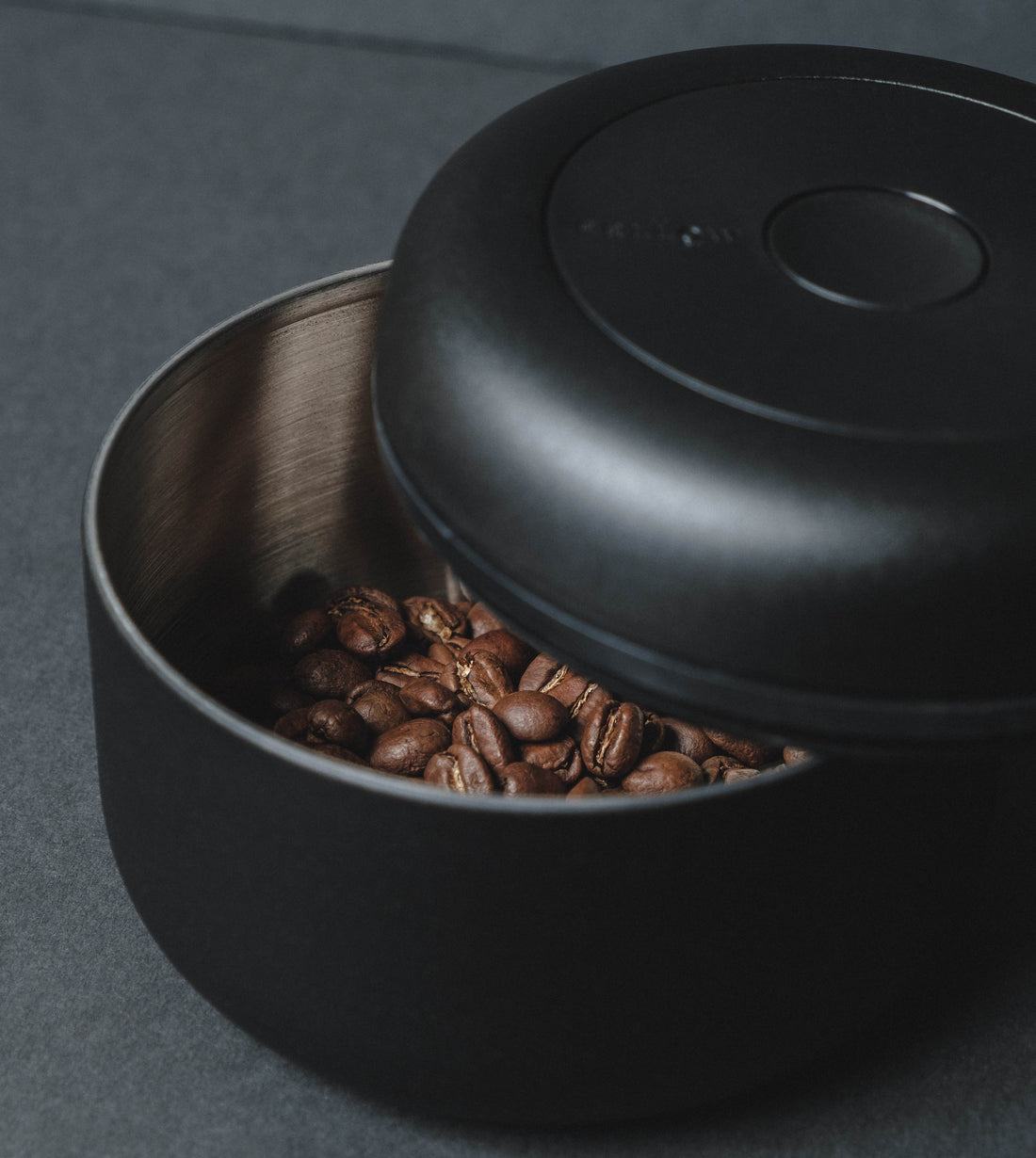
How To Slow Coffee From Ageing
Share this article
Coffee just like most other fresh and natural products does indeed go stale. While coffee doesn't expire or have a 'use by' date, It's popular to find a 'roasted on' date which helps guide consumers as to how fresh their coffee beans are.
Stale coffee can taste bland, earthy, dull and overall just flat. There are many suggestions circulating in the industry that 1-2, 2-3 or 3-4 weeks is optimal or peak freshness for coffee. And while I wish it was as easy as that, it's not. Depending on the roast profile, the coffee itself and so many other factors each coffee will have it's own peak freshness date.
Why You Can’t Stop Coffee from Ageing (But You Can Slow It Down)
Coffee is a natural product, and like all natural products, it degrades over time. Ageing coffee loses its complexity, brightness, and richness. This decline is inevitable because of exposure to environmental factors, but with the right tools and techniques, you can slow the process significantly.
The culprits behind coffee ageing include time, temperature, sunlight, moisture, and oxygen. Understanding these factors is the first step toward mastering coffee storage.

How to tell if your coffee is old
There are a couple of ways to tell if your coffee is old, sometimes looking at the roast date simply isn't accurate as different coffee beans taste better around 1-2 weeks and others taste best at 3-4 weeks.
Depending on the brew method there are different ways to tell if your coffee beans are old or not, for espresso you want to see a thick syrupy crema form on top of your espresso let your coffee sit for 30 seconds and if you don't see crema continuing to hold on top of your espresso it's a pretty good indication that your coffee isn't at it's freshest.
If you're brewing a pour over, batch brew or something like an AeroPress coffee, a healthy crust on the surface of the coffee paired with big bubbles on your first and second pour are great indicators of fresh coffee! If you don't see bubbles you can safely guess that coffee has been sitting there for a while.
While both of these are visual methods of identifying the freshness of your coffee it is more important to use your sense of taste and aroma to identify coffee age. As I said in the beginning, coffee beans can vary heaps in their flavour and individualities so going off your sense of taste is the best way to go.
How to Tell When Your Coffee is at it's Peak Freshness?
Coffee changes subtly as it ages, sometimes coffee ages gracefully and others not so much. Every coffee is unique and everyone who drinks that coffee has their own preferences but generally speaking coffee does have a peak period when it's tasting the best, not too fresh and not too old.
The first step to go about this is to ask the roaster, they should be able to tell you when they found the coffee to be at it's peak. However the more tedious way to go about this is through trial and error. By tasting coffee and gauging how the taste changes you can work out at which time you most enjoyed that coffee but it is important to know that this process will mean that you are left with some old coffee.
After all, to know when something tastes fantastic you have to also taste it at it's worst.
Key Factors That Accelerate Coffee Ageing
1. Time
Time is coffee’s biggest enemy. As days and weeks pass, the delicate compounds responsible for the flavour in your coffee degrade. To enjoy the freshest coffee, aim to use beans within a couple of weeks from their roast date.
2. Temperature
Heat accelerates chemical reactions within coffee beans, causing them to stale more quickly. Keeping your coffee away from warm environments, such as near ovens or in direct sunlight, can help to slow down the ageing of your coffee.
3. Sunlight
Direct sunlight breaks down the delicate oils and compounds in coffee, contributing to its decline in freshness. Even ambient light in a kitchen can have an effect over time.
4. Moisture
Coffee is hygroscopic, meaning it absorbs moisture from the air. Excess humidity can spoil coffee by introducing unwanted flavours and causing clumping, which impacts grind quality.
5. Oxygen
Oxygen is one of the primary agents of coffee ageing. When exposed to air, coffee undergoes oxidation, which dulls its flavours. Preventing contact with air is vital for maintaining freshness.
Best Practices for Storing Coffee
1. Vacuum-Sealed
Investing in high-quality storage canisters can extend the freshness of your coffee. Products like the Fellow Atmos Coffee Bean Vacuum Canister create an airtight seal and actively remove oxygen, slowing oxidation significantly. These canisters are perfect for maintaining the vibrancy of your beans without taking up much space. This canister offers sleek functionality with a vacuum-sealing system that’s as simple as twisting the lid. It’s perfect for small kitchens and casual coffee enthusiasts.
2. Airscape Canisters
For bulk storage, consider the Airscape range of coffee canisters. Its patented lid design forces air out and locks it away, creating an environment that keeps larger quantities of coffee fresh. For households consuming larger quantities of coffee, this robust canister handles up to 1kg of beans. It’s great for protecting beans from both air and humidity.
3. Fellow Atmos Vacuum Canisters
These are essentially the Airscape Canisters but on steroids. Inside the lids of the Fellow Atmos is a pump that removes the air from the container and essentially creates a vacuum or more technically (a Low-oxygen pressurised environment).
While the Airscape Canisters push out the adittional air their is still the remaining air in between the coffee beans, the Fellow Atmos removes most of the air inside the canister and creates a negative pressure inside the container.
4. Single Dose Storage
Single doses of coffee beans in tubes, vials or centrifuge tubes aren't vacuum and do have some air inside but they are easily able to be stored in a freezer and also solve another problem that coffee canisters don't.
When storing coffee beans in a coffee canister, regardless of a complete vacuum seal or not, you are constantly accessing your coffee beans so you are re-exposing these coffee beans to new air. Single dosing portions of coffee beans resolves this issue as the coffee isn't constantly re-exposed to new air.
How Storage Techniques Impact Freshness
Why Single-Dosing Matters
Single-dosing is a method of storing and grinding only the amount of coffee needed for each brew. This minimises exposure to air and reduces the chances of your entire coffee supply staling. The Basic Barista recommends this technique for anyone looking to enhance consistency and quality in their brews. Check out more on single-dose coffee storage here.
The Importance of Small Batches
Grinding coffee accelerates its ageing process, as more surface area is exposed to oxygen. If you don’t single-dose, ensure you grind only what you need immediately before brewing.
Tips for Storing Coffee Beans Long Term
- Buy Fresh, Roast-to-Order Coffee: Purchase beans roasted within the past week, and buy in smaller quantities to ensure you finish them while they’re still fresh.
- Store in a Cool, Dark Place: Avoid cabinets near heat sources and ensure your storage location is away from direct sunlight.
- Avoid the Freezer: Freezing coffee can trap moisture inside the beans, which affects the flavour when thawed. If you must freeze, vacuum-seal the beans in small portions and thaw them gradually.
Making the Most of Fresh Coffee
Freshness is the cornerstone of a great cup of coffee, and with a few thoughtful adjustments to your storage habits, you can significantly enhance your brewing experience. Whether you’re using vacuum-sealed canisters, single-dose tubes, or simply being mindful of environmental factors, the effort you put into preserving your beans will always be worth it.
For the best results think about your current situation, ask yourself how long you plan on storing coffee beans, how much coffee you will need to store, where you will store these beans and then consider investing in containers like the Fellow Atmos, Airscape Kilo, and Single dose coffee tubes.
Life's too short to be drinking stale coffee 😉











